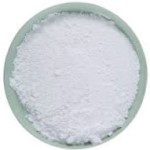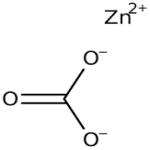CAS Number 5263-02-5 & 3486-35-9, Zinc Carbonate and Basic Zinc Carbonate Grade Manufacturers Exporters







CAS Number 5263-02-5 & 3486-35-9, Zinc Carbonate and Basic Zinc Carbonate Manufacturer Exporter
For Properties Specifications of Zinc Carbonate and Basic Zinc Carbonate Click Properties, Specifications of Zinc Carbonate and Basic Zinc Carbonate Manufacturer.
For Uses of Zinc Carbonate and Basic Zinc Carbonate Click Uses of Zinc Carbonate and Basic Zinc Carbonate Manufacturer.
For For SDS MSDS Sheet of Zinc Carbonate and Basic Zinc Carbonate Click SDS Safety Data Sheet MSDS Sheet of Zinc Carbonate and Basic Zinc Carbonate Manufacturer.
The Properties and Specifications of Zinc Carbonate and Basic Zinc Carbonate :
Specifications and Typical COA of Commercial Grade Zinc Carbonate:Particulars ----- Specification ----- Observation
Zinc Content ---- 55% minimum ------- 57.4%
Iron ------------ 0.02% maximum ----- Complies
Heavy Metals ---- 0.02% maximum ----- Complies
Zinc Carbonate USP
Zinc Carbonate USP
3Zn(OH)2·2ZnCO3 549.01
Basic zinc carbonate.
Zinc subcarbonate [CAS 3486-35-9]
Zinc Carbonate contains the equivalent of not less than 70.0 percent of ZnO.
Packaging and storage: Preserve in tight containers.
Identification: A solution of it in a slight excess of hydrochloric acid responds to the tests for Zinc.
Insoluble matter: Dissolve 10-g Zinc Carbonate in a mixture of 100 mL of water and 7 mL of sulfuric acid, and heat on a steam bath for 1 hour. Filter the solution through a tarred sintered-glass crucible, wash with hot water, dry the crucible at 105 , cool, and weigh: the residue weighs not more than 20 mg (0.02%).
Chloride: A 1.0-g Zinc Carbonate dissolved in a mixture of 20 mL of water and 3 mL of nitric acid shows no more chloride than corresponds to 0.03 mL of 0.02 N hydrochloric acid (0.002%).
Sulfate: Dissolve 10.0-g Zinc Carbonate in a mixture of 75 mL of water and 10 mL of hydrochloric acid, and filter. Neutralize the filtrate with ammonium hydroxide, dilute with water to 100 mL, and mix. To 10.0 mL of this solution add 1 mL of 0.6 N hydrochloric acid and 1 mL of barium chloride TS, mix, and allow to stand for 10 minutes. This test solution shows no more turbidity, if any, than that produced in a solution containing 0.10 mL of 0.02 N sulfuric acid and the same quantities of reagents used to prepare the test solution (0.01%).
Iron: Dissolve 1.0-g Zinc Carbonate in 20 mL of water and 3 mL of hydrochloric acid: the limit is 0.002%.
Lead: the limit is 5 ppm.
Substances not precipitated by ammonium sulfide: Dissolve 1.0-g Zinc Carbonate in 10 mL of water and 2 mL of sulfuric acid, dilute with water to 80 mL, add 10 mL of ammonium hydroxide, and pass hydrogen sulfide through the solution for about 30 minutes. Dilute with water to 100 mL, and allow the precipitate to settle. Decant the supernatant through a filter, and transfer 50 mL of the clear filtrate to a tarred dish, evaporate to dryness, ignite, gently at first and finally at 800 ± 25 , cool, and weigh: the weight of the residue does not exceed 2 mg (0.4%).
The Uses of Zinc Carbonate and Basic Zinc Carbonate:
Basic Zinc Carbonate is extensively used in oil and gas fracturing. Zinc carbonate is usually applied in treatments for patients with skin problems. They are applied in light and astringent latex products. Basic Zinc Carbonate is used in pharmaceutical industries.
The MSDS-SDS Hazard Statement of Zinc Carbonate and Basic Zinc Carbonate :
Zinc Carbonate SDS, Safety Data Sheet
MSDS Sheet Material Safety Data Sheet
Basic Zinc Carbonate SDS 31-Jan-23
Section 1: Chemical Product and Company Identification
Product Name & Other Names: Basic zinc carbonate or Zinc carbonate.
CAS-No. : 5263-02-5 for Basic Zinc carbonate 3Zn(OH)2.2ZnCO3; CAS#: 3486-35-9 for ZnCO3
EINECS EC Number: 226-076-7 for Basic Zinc carbonate and 222-477-6 for ZnCO3
Relevant uses and uses advised against (if any): Industrial Manufacturing.
Section 2: Hazards Identification
GHS, Globally Harmonized System Classification in accordance with 29 CFR 1910
Classification according to Regulation (EC) No 1272/2008
Not a hazardous substance or mixture according to Regulation (EC) No 1272/2008
This substance is not classified as dangerous according to Directive 67/548/EEC.
Labeling according to GHS USA & Regulation (EC) No 1272/2008
GHS Label Elements NONE |
Signal Word: None
Precautionary statements:
P261: Avoid breathing dust/fume/gas/mist/vapors/spray.
P302+P352: IF ON SKIN: Wash with plenty of soap and water.
P304 + P340 - IF INHALED: Remove victim to fresh air and keep at rest in a position comfortable for breathing.
P305 + P351 + P338 - IF IN EYES: Rinse cautiously with water for several minutes. Remove contact lenses, if present and easy to do. Continue rinsing.
P337+313: If eye irritation persists get medical advice/attention.
Section 3: Composition and Information on Ingredients
Product Name & Other Names: Basic zinc carbonate or Zinc carbonate.
CAS-No. : 5263-02-5 for Basic Zinc carbonate 3Zn(OH)2.2ZnCO3; CAS#: 3486-35-9 for ZnCO3
EINECS EC Number: 226-076-7 for Basic Zinc carbonate and 222-477-6 for ZnCO3
Section 4: First Aid Measures
Eye Contact: Flush eyes with plenty of water for at least 15 minutes, occasionally lifting the upper and lower eyelids. Get medical aid.
Skin Contact: After contact with skin, wash immediately with plenty of water. Gently and thoroughly wash the contaminated skin with running water and non-abrasive soap. Be particularly careful to clean folds, crevices, creases, and groin. Cover the irritated skin with an emollient. If irritation persists, seek medical attention.
Inhalation: Remove from exposure and move to fresh air immediately. If not breathing, give artificial respiration. If breathing is difficult, give oxygen. Get medical aid if cough or other symptoms appear.
Section 5: Fire and Explosion Data
Flammability of the Product: Non-flammable.
Products of Combustion: Not available.
Special Information: In the event of a fire, wear full protective clothing and NIOSH-approved self-contained breathing apparatus with full face piece operated in the pressure demand or other positive pressure mode. At high temperatures under fire conditions, it may produce toxic or irritating fumes. Fire-extinguishing work is done from the windward and the suitable fire-extinguishing method according to the surrounding situation is used.
Section 6: Accidental Release Measures
Personal precautions, protective equipment, and emergency procedures: Ventilate area of leak or spill. Avoid breathing dust/fumes/gas/mist/vapors/spray. Use individual protective equipment (waterproof boots, suitable protective clothing, safety glasses, etc.). Do not approach facing the wind.
Environmental precautions: Do not let the product enter drains, soil, or water sources.
Methods and materials used for containment Cleanup procedures and Storage: Contain spilled material. Cover with an inert, non-combustible absorbent material, (e.g. sand, earth, diatomaceous earth, vermiculite). Vacuum or sweep-up and remove to an approved disposal container.
Section 7: Handling and Storage
Precautions for safe handling: Apply according to good manufacturing and industrial hygiene practices. Ensure proper ventilation. Wash thoroughly after handling. Do not drink, eat, or smoke while handling. Avoid contact with skin, eyes, and clothing. Minimize dust generation. Avoid breathing dust/fumes/gas/mist/vapors/spray. Avoid contact with eyes, skin, and clothing. Keep container tightly closed. Avoid ingestion and inhalation. Use individual protective equipment (waterproof boots, suitable protective clothing, safety glasses, etc.).
Conditions for safe storage, including any incompatibilities: Store in cool, dry, and ventilated area away from heat sources and protected from sunlight in tightly closed original container. Keep air contact to a minimum. Store protected from heat, sparks and ignition sources and incompatible materials. Avoid contact with skin and eyes. Avoid inhalation of dust/mist/vapor. Do not store with incompatible materials like strong oxidizing agents and acids.
Section 8: Exposure Controls/Personal Protection
Exposure Limits: This product does not contain any hazardous materials with occupational exposure limits established by the region-specific regulatory bodies.
Engineering Controls: Use process enclosures, local exhaust ventilation, or other engineering controls to keep airborne levels low.
Ventilation System: A system of local and/or general exhaust is recommended to keep employee exposures as low as possible.
Personal Respirators (NIOSH Approved): For conditions of use where exposure to dust or mist is apparent and engineering controls are not feasible, a particulate respirator may be worn.
Skin Protection: Wear protective gloves and clean body-covering clothing.
Eye Protection: Use chemical safety goggles and/or full face shield where dusting or splashing of solutions is possible. Maintain eye wash fountain and quick-drench facilities in work area.
Other Control Measures: Maintain good housekeeping in work area. Handle in accordance with good industrial hygiene and safety practice.
Section 9: Physical and Chemical Properties
Appearance: White powdered solid
Odor: Odorless.
Odor threshold: Not available.
pH: Not available.
Relative density: Not available.
Melting Point: Decomposes.
Initial boiling point and boiling range: Not available.
Flash point: Not available.
Auto-ignition temperature: Not available.
Decomposition temperature: Not available.
Upper/lower flammability or explosive limits: Not available.
Vapor pressure: Not available.
Vapor density: Not available.
Evaporation rate: Not available.
Flammability (solid, gas): Not available.
Partition coefficient: n-octanol/water: Not available.
Solubility: Very slightly soluble in cold water, hot water.
Viscosity: Not available.
Section 10: Stability and Reactivity Data
Stability: Stable under normal conditions.
Incompatibility with various substances: Extremely reactive or incompatible with acids.
Polymerization: No.
Section 11: Toxicological Information
Toxicity to Animals:
LD50 Oral - rat - > 10.000 mg/kg
Carcinogenicity: No component of this product present at levels greater than or equal to 0.1% is identified as probable, possible, or confirmed human carcinogen by IARC.
Mutagenic Effects: Not available.
Developmental Toxicity: Not available.
Reproductive Effects: No information available.
Section 12: Ecological Information
Toxicity to fish: LC50 - Leuciscus idus (Golden orfe) - > 5.000 mg/l - 96 h
Toxicity to daphnia and other aquatic invertebrates: LC50 - > 2.000 mg/l - 16 h
Products of Biodegradation: Possibly hazardous short-term degradation products are not likely. However, long term degradation products may arise.
Persistence and Degradability: No information available.
Mobility: No information available.
Bioaccumulation/ Accumulation: No information available.
Results of PBT and vPvB assessment: No data available for assessment.
Section 13: Disposal Considerations
Waste Disposal: Dispose all waste in accordance with legal requirement.
Section 14: Transport Information
DOT USA, TDG Canada & ADR/RID Europe: Not controlled.
IMDG/IMO: Not controlled.
IATA/ICAO: Not controlled.
Section 15: Other Regulatory Information
USA:
California Proposition 65: Not listed.
SARA 311/312: See section 2.
DISCLAIMER: The information and recommendations set forth herein (hereinafter "Information") are presented in good faith and believed correct as of the date hereof. It is compiled from various sources and it is not necessarily all inclusive nor fully adequate in every circumstance. In addition, these suggestions should not be confused with nor followed in violation of applicable laws, regulations, rules or insurance requirements applicable. This MSDS sheet is intended only as a guide to the appropriate precautionary handling of the material by a properly trained person using this product. Individuals receiving the information must exercise their independent judgment in determining its appropriateness for a particular purpose.
Anmol Chemicals & Pharmaceuticals Pvt. Ltd. is an off-shoot of Anmol Chemicals Taloja. It is located in MIDC Taloja and it is manufacturing pharmaceutical grades of API, Excepients, Food grade and Reagent grade chemicals. Anmol Chemicals & Pharmaceuticals Pvt. Ltd. is a several decades old group of companies, engaged in manufacturing, supplying, distributing, wholesale supplies for actual users, retail or small pack supplies for research and development chemicals, fine and speciality chemicals, pharmaceutical excipients, mineral fortifiers in chemically pure, Analytical reagent grade, IP BP USP Ph Eur EP JP and other pharmaceutical grade monograph including FCC Food grade chemicals and Nutraceuticals, Mineral Fortifiers at best prices.


Zinc Carbonate and Basic Zinc Carbonate Structure
CAS Number 5263-02-5 & 3486-35-9, Zinc Carbonate and Basic Zinc Carbonate Manufacturer Exporter
ANMOL CHEMICALS & PHARMACEUTICALS Pvt. Ltd.
India, USA, Europe, UAE
TELEPHONE: +912223770100
Navi Mumbai, INDIA
e-mail: info(At the rate i.e. @)anmol.org
Copyright. 1-feb-23
We manufacture:
Glacial Acetic Acid Manufacturer
Dihydroxyaluminum Sodium Carbonate
Hydrated Manganese Glycerophosphate
Hydrated Sodium Glycerophosphate
TBHQ Tertiary Butylhydroquinone

